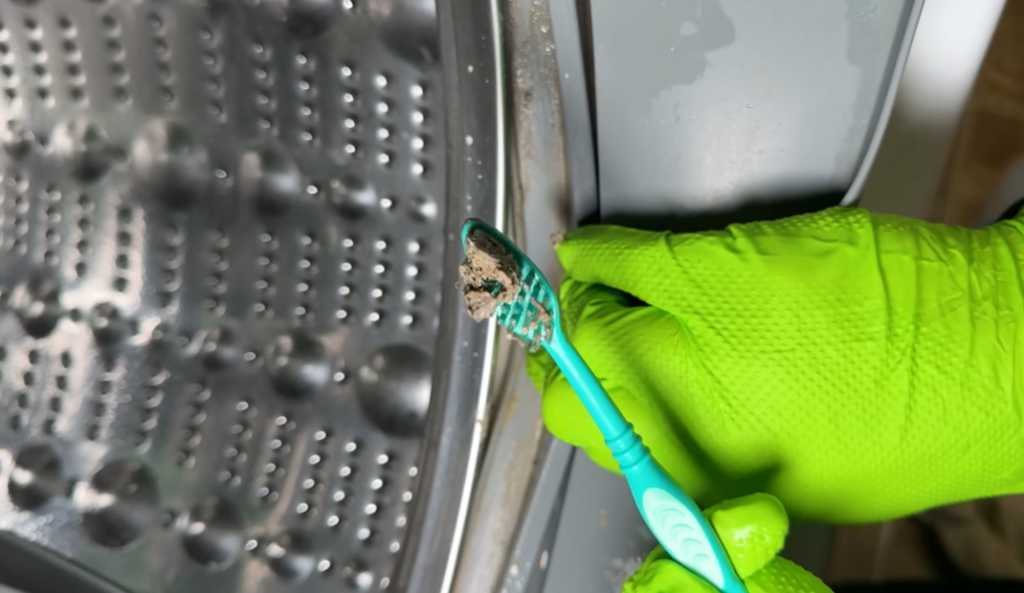A clean washing machine is essential for maintaining fresh and clean clothes. However, over time, mold and mildew can build up on the washing machine seal, causing unpleasant odors and potentially damaging the machine. Cleaning the seal is a simple process that can be done with a few household items.
Regular cleaning can also prevent the buildup of mold and mildew, ensuring that your washing machine stays in top condition. We’ll go over the steps to clean a washing machine seal and how to prevent mold and mildew buildup.
Table of Contents

Introduction To Washing Machine Maintenance
How to clean washing machine seal? Regular maintenance of your washing machine seal is crucial for its optimal performance. Learn how to clean the seal effectively to prevent mold and mildew buildup, ensuring a clean and fresh laundry experience. Say goodbye to musty odors and hello to a well-maintained washing machine.
Regular maintenance of your washing machine is essential to ensure its optimal performance and longevity. One crucial aspect of washing machine work maintenance is cleaning the seal. The seal, also known as the gasket, is a rubber lining that creates a watertight seal between the door and the drum of your washing machine. Over time, the seal can accumulate dirt, grime, and mold, leading to various issues. In this blog post, we will explore why cleaning the seal is crucial and discuss the common issues that arise from dirty seals.
Why Cleaning The Seal Is Crucial
Regularly cleaning the seal of your washing machine is vital for several reasons:
- Preventing Mold Growth: Moisture and detergent residue can accumulate in the seal, providing an ideal breeding ground for mold and mildew. Cleaning the seal regularly helps prevent mold growth, which can cause unpleasant odors and health issues.
- Maintaining Efficiency: A dirty seal can obstruct the door’s proper closing, leading to water leakage during a wash cycle. Additionally, a buildup of debris can interfere with the smooth rotation of the drum, affecting the washing machine’s overall efficiency.
- Extending Lifespan: By cleaning the seal regularly, you can remove any potential sources of damage or wear. This preventive measure helps extend the lifespan of your washing machine, saving you money on costly repairs or replacements.

Common Issues With Dirty Seals
A dirty seal can cause various problems, including:
- Leakage: When the seal is compromised due to dirt or debris, water can leak out of the washing machine during a wash cycle. This not only creates a mess but can also damage your flooring or nearby appliances.
- Odors: Mold and mildew growth in the seal can result in unpleasant odors that transfer onto your freshly washed clothes. Regular cleaning of the seal helps eliminate these odors, ensuring your laundry smells fresh.
- Poor Cleaning Results: A dirty seal can interfere with the proper functioning of your washing machine, potentially leading to inadequate cleaning results. This can leave stains, residue, or lint on your clothes, requiring re-washing or extra effort to remove.
Now that we understand the importance of cleaning the seal and the issues that arise from neglecting this maintenance task, let’s explore how to effectively clean the washing machine seal in the next section.
Step By Steps How To Clean Washing Machine Seal
Are you noticing a musty odor coming from your washing machine? It might be time to give your washing machine seal some attention. Cleaning the seal is crucial to prevent mold and mildew buildup, and to keep your laundry smelling fresh. Follow this step-by-step guide to effectively clean your washing machine seal and maintain a clean and odor-free laundry area.
Materials You’ll Need
Before you begin, gather the following materials to ensure a thorough cleaning of your washing machine seal:
- Bleach or white vinegar
- Soft-bristled brush or old toothbrush
- Clean cloth or sponge
- Hot water
Pre-cleaning Preparations
Prior to starting the cleaning process, take these preparatory steps to ensure an effective cleaning:
- Unplug the washing machine or turn off the power to ensure safety.
- Open the door of the washing machine to access the seal.
- Wipe away any visible debris or mold on the seal with a clean cloth.
The Cleaning Process
Follow these steps to clean the washing machine seal:
- Mix a solution of equal parts water and bleach or white vinegar in a container.
- Dip the soft-bristled brush or old toothbrush into the solution.
- Gently scrub the entire seal, paying special attention to any mold or mildew spots.
- Wipe the seal with a clean cloth or sponge soaked in hot water to remove the cleaning solution.

Post-cleaning Care
After cleaning the washing machine seal, it’s essential to perform the following post-cleaning care:
- Leave the washing machine door open for a few hours to allow the seal to dry completely.
- Regularly wipe down the seal and the surrounding area to prevent future mold growth.
Preventing Future Mold And Mildew
To prevent future mold and mildew growth, it’s important to clean your washing machine seal regularly. Use a mixture of water and white vinegar to wipe down the seal and remove any buildup. Be sure to also leave the door open after each use to allow air to circulate and prevent moisture buildup.
Regular Maintenance Tips
To prevent future mold and mildew growth in your washing machine seal, regular maintenance is essential. Here are some tips to keep your washing machine clean and free from these pesky problems:

1. Keep it dry: After each wash cycle, make sure to wipe down the seal and the surrounding areas with a dry cloth. This will help remove any moisture that may have accumulated and prevent the growth of mold and mildew.
2. Leave the door open: When you’re not using the washing machine, it’s a good idea to leave the door slightly ajar. This allows air to circulate and helps dry out any remaining moisture, reducing the chances of mold and mildew development.
3. Clean the detergent dispenser: Regularly remove and clean the detergent dispenser tray. Use warm soapy water to remove any residue or buildup that could contribute to mold growth.
4. Inspect and clean the filter: Many washing machines have a filter that traps lint, debris, and other particles. Check your machine’s manual to locate the filter and clean it regularly to prevent clogs and mold growth.
Choosing The Right Detergents
The choice of detergents can also play a role in preventing mold and mildew in your washing machine seal. Here are a few tips to consider:
1. Use high-efficiency (HE) detergents: HE detergents are specifically formulated for modern, high-efficiency washing machines. These detergents produce fewer suds, reducing the chances of residue buildup and mold growth.

2. Avoid excessive use of fabric softeners: Fabric softeners can leave a sticky residue on the seal, providing a breeding ground for mold and mildew. Use them sparingly or opt for alternatives like vinegar or baking soda.
3. Consider using washing machine cleaning products: There are specific cleaning products available in the market designed to clean and freshen your washing machine. These can help eliminate any existing mold or mildew and prevent their future growth.
When To Seek Professional Help
In some cases, despite your best efforts, mold and mildew may persist in your washing machine seal. If you notice a persistent musty odor or visible signs of mold growth that are difficult to remove, it may be time to seek professional help. A professional technician can thoroughly clean and disinfect your washing machine, ensuring the removal of any hidden mold or mildew and restoring its optimal performance. By following these regular maintenance tips, choosing the right detergents, and knowing when to seek professional help, you can prevent future mold and mildew growth in your washing machine seal. Keep your machine clean and odor-free for fresh and hygienic laundry every time.

Frequently Asked Questions
How Do You Clean A Rubber Seal On A Washing Machine?
To clean a rubber seal on a washing machine, mix equal parts of water and vinegar in a spray bottle. Spray the solution onto the seal and let it sit for 5-10 minutes. Use a soft-bristled brush to scrub the seal, then wipe it down with a damp cloth.
Repeat if necessary.
How Do You Remove Black Mold From Washing Machine Rubber Seal?
To remove black mold from a washing machine rubber seal, mix equal parts of water and bleach. Dip a cloth or sponge into the solution and scrub the affected area thoroughly. Rinse with clean water and wipe dry. Regularly clean the seal to prevent future mold growth.
Can You Use White Vinegar On A Washing Machine Rubber Seal?
Yes, white vinegar can be used on a washing machine rubber seal. It helps remove mold, mildew, and residue. Gently wipe the seal with a cloth soaked in vinegar, then rinse with water. Regular maintenance will prolong the life of your washing machine seal.
Can I Use Bleach To Clean Washing Machine Seal?
Yes, you can use bleach to clean the washing machine seal. Dilute one cup of bleach with a gallon of water and wipe the seal. Ensure proper ventilation.
Conclusion
Maintaining a clean washing machine seal is crucial for effective laundry results. By following the simple steps outlined in this guide, you can prevent mold and mildew buildup, ensuring a fresh and hygienic washing machine. Regular cleaning will prolong the lifespan of your appliance and improve the quality of your laundry.










Leave a Reply